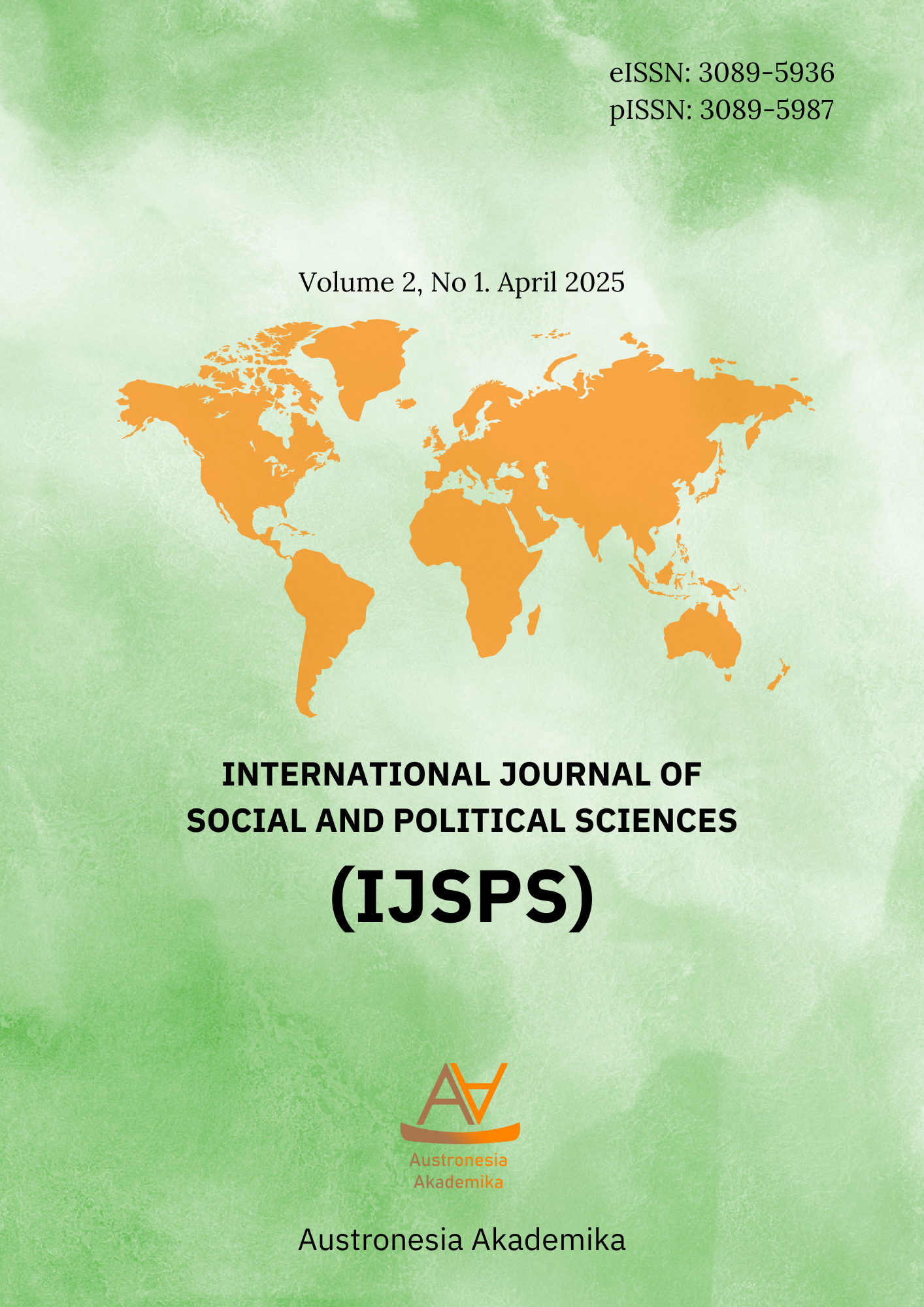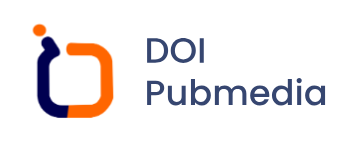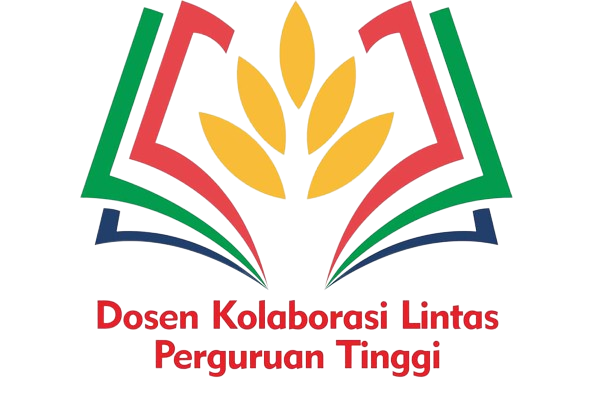Performance Evaluation of Pasaman Communication Office in Implementing SPBE and Public Services
DOI:
https://doi.org/10.69812/ijsps.v2i1.99Keywords:
SPBE Implementation, Digital Governance, Accountability, PerformanceAbstract
This study evaluates the performance of the Pasaman Regency Communication and Information Office (Diskominfo) in implementing the Electronic-Based Government System (SPBE) and delivering public services, as mandated by national digital transformation agendas. In recent years, the Indonesian government has emphasized digital governance as a pathway to enhance transparency, accountability, and efficiency in public administration. Within this context, regional governments are expected to meet SPBE indicators as documented in annual performance reports such as LAKIP. The primary objective of this research is to assess how effectively Diskominfo Pasaman has implemented SPBE, identify enabling and inhibiting factors, and provide recommendations to strengthen regional digital governance. Utilizing a qualitative descriptive method with a case study design, the research draws on document analysis of the 2023 LAKIP report, supported by related regulations and strategic planning documents. The analysis reveals significant progress, with SPBE implementation rising from 20% in 2022 to 50% in 2023, supported by consistent BB predicate ratings in SAKIP assessments and overachievement in program realization (102.12%). However, the study also identifies critical constraints, including limited ICT human resources, regulatory delays, and infrastructure disparities in remote areas. The findings suggest that while numerical indicators show advancement, structural and strategic reforms are needed for sustainable digital transformation. This research concludes that regional SPBE success depends not only on technological tools but also on institutional readiness, legal frameworks, and inclusive access—highlighting the importance of holistic governance in Indonesia’s digital reform efforts.
Downloads
References
Agostino, D., Bracci, E., & Steccolini, I. (2022). Accounting and accountability for the digital transformation of public services. Financial Accountability and Management, 38(2), 145–151. https://doi.org/10.1111/FAAM.12314
Agostino, Deborah., Saliterer, I., & Steccolini, I. (2022). Digitalization, accounting and accountability: A literature review and reflections on future research in public services. Financial Accountability and Management, 38(2), 152–176. https://doi.org/10.1111/FAAM.12301
Botelho, F. H. F. (2021). Accessibility to digital technology: Virtual barriers, real opportunities. Assistive Technology, 33(sup1), 27–34. https://doi.org/10.1080/10400435.2021.1945705
Bowen, G. A. (2009). Document analysis as a qualitative research method. Qualitative Research Journal, 9(2), 27–40. https://doi.org/10.3316/QRJ0902027/FULL/XML
Cordery, C., Belal, A. R., & Thomson, I. (2019). NGO accounting and accountability: past, present and future. Accounting Forum, 43(1), 1–15. https://doi.org/10.1080/01559982.2019.1593577
Cordery, C., & Deguchi, M. (2018). Charity registration and reporting: a cross-jurisdictional and theoretical analysis of regulatory impact. Public Management Review, 20(9), 1332–1352. https://doi.org/10.1080/14719037.2017.1383717
Cordery, C., Goncharenko, G., Polzer, T., McConville, D., & Belal, A. (2023). NGOs’ performance, governance, and accountability in the era of digital transformation. The British Accounting Review, 55(5), 101239. https://doi.org/10.1016/J.BAR.2023.101239
Cordery, C. J., Crawford, L., Breen, O. B., & Morgan, G. G. (2019). International practices, beliefs and values in not-for-profit financial reporting. Accounting Forum, 43(1), 16–41. https://doi.org/10.1080/01559982.2019.1589906
Creswell, J. W., & Poth, C. N. (2016). Qualitative Inquiry and Research Design: Choosing Among Five Approaches. In Sage Publications. Washington DC, United States of America: Sage publications.
Emanuel, E. J., & Emanuel, L. L. (1996). What is accountability in health care? Annals of Internal Medicine, 124(2), 229–239. https://doi.org/10.7326/0003-4819-124-2-199601150-00007
Flick, U. (2022). An Introduction to Qualitative Research. SAGE Publications.
Goncharenko, G. (2019). The accountability of advocacy NGOs: insights from the online community of practice. Accounting Forum, 43(1), 135–160. https://doi.org/10.1080/01559982.2019.1589901
Hajra, V., & Aggarwal, A. (2023). Unveiling the antecedents of senior citizens′ behavioural intentions to travel: A mixed-method approach. Tourism and Hospitality Research, 23(3), 312–331. https://doi.org/10.1177/14673584221085459
Kuruppu, S. C., Dissanayake, D., & de Villiers, C. (2022). How can NGO accountability practices be improved with technologies such as blockchain and triple-entry accounting? Accounting, Auditing and Accountability Journal, 35(7), 1714–1742. https://doi.org/10.1108/AAAJ-10-2020-4972
Madianou, M., Ong, J. C., Longboan, L., & Cornelio, J. S. (2016). The Appearance of Accountability: Communication Technologies and Power Asymmetries in Humanitarian Aid and Disaster Recovery. Journal of Communication, 66(6), 960–981. https://doi.org/10.1111/JCOM.12258
Mayumana, I., Borghi, J., Anselmi, L., Mamdani, M., & Lange, S. (2017). Effects of Payment for Performance on accountability mechanisms: Evidence from Pwani, Tanzania. Social Science and Medicine, 179, 61–73. https://doi.org/10.1016/j.socscimed.2017.02.022
McKernan, J. F., & McPhail, K. (2012). Accountability and Accounterability. Critical Perspectives on Accounting, 23(3), 177–182. https://doi.org/10.1016/j.cpa.2011.12.003
Morgan, N. A., Jayachandran, S., Hulland, J., Kumar, B., Katsikeas, C., & Somosi, A. (2022). Marketing performance assessment and accountability: Process and outcomes. International Journal of Research in Marketing, 39(2), 462–481. https://doi.org/10.1016/J.IJRESMAR.2021.10.008
Mutiganda, J. C. (2013). Budgetary governance and accountability in public sector organisations: An institutional and critical realism approach. Critical Perspectives on Accounting, 24(7–8), 518–531. https://doi.org/10.1016/j.cpa.2013.08.003
Roberts, J. (1991). The possibilities of accountability. Accounting, Organizations and Society, 16(4), 355–368. https://doi.org/10.1016/0361-3682(91)90027-C
Roberts, J., & Scapens, R. (1985). Accounting systems and systems of accountability - understanding accounting practices in their organisational contexts. Accounting, Organizations and Society, 10(4), 443–456. https://doi.org/10.1016/0361-3682(85)90005-4
Saliterer, I., & Korac, S. (2013). Performance information use by politicians and public managers for internal control and external accountability purposes. Critical Perspectives on Accounting, 24(7–8), 502–517. https://doi.org/10.1016/j.cpa.2013.08.001
Saxton, G. D., & Guo, C. (2011). Accountability online: Understanding the web-based accountability practices of nonprofit organizations. Nonprofit and Voluntary Sector Quarterly, 40(2), 270–295. https://doi.org/10.1177/0899764009341086
Schmitz, H. P., Raggo, P., & Bruno-van Vijfeijken, T. (2012). Accountability of Transnational NGOs: Aspirations vs. Practice. Nonprofit and Voluntary Sector Quarterly, 41(6), 1175–1194. https://doi.org/10.1177/0899764011431165
Shaferi, I., Laksana, R. D., Nawarini, A. T., & Widiastuti, E. (2024). Determining performance with accountability policy as a mediating factor in agricultural public service organizations. BIO Web of Conferences, 130. https://doi.org/10.1051/BIOCONF/202413008002
Shearer, T. (2002). Ethics and accountability: From the for-itself to the for-the-other. Accounting, Organizations and Society, 27(6), 541–573. https://doi.org/10.1016/S0361-3682(01)00036-8
Simonson, I., & Nye, P. (1992). The effect of accountability on susceptibility to decision errors. Organizational Behavior and Human Decision Processes, 51(3), 416–446. https://doi.org/10.1016/0749-5978(92)90020-8
Sinclair, A. (1995). The chameleon of accountability: Forms and discourses. Accounting, Organizations and Society, 20(2–3), 219–237. https://doi.org/10.1016/0361-3682(93)E0003-Y
Stewart, D. W. (2009). Marketing accountability: Linking marketing actions to financial results. Journal of Business Research, 62(6), 636–643. https://doi.org/10.1016/j.jbusres.2008.02.005
Supriyanto, T. (2024). The Influence of Social Media on Political Participation in the Digital Era. International Journal of Social and Political Sciences, 1(1), 43–54. https://doi.org/10.69812/IJSPS.V1I1.46
Taylor, Z. (2013). Rethinking planning culture: A new institutionalist approach. Town Planning Review, 84(6), 683–702. https://doi.org/10.3828/TPR.2013.36
Tingey-Holyoak, J. L., Pisaniello, J. D., Burritt, R. L., & Spassis, A. (2013). Incorporating on-farm water storage safety into catchment policy frameworks: International best practice policy for private dam safety accountability and assurance. Land Use Policy, 33, 61–70. https://doi.org/10.1016/j.landusepol.2012.12.011
Yang, H., & Zhu, X. (2022). Research on Green Innovation Performance of Manufacturing Industry and Its Improvement Path in China. Sustainability (Switzerland), 14(13). https://doi.org/10.3390/SU14138000
Yin, R. K. (2018). Case Study Research and Applications Design and Methods Sixth Edition. In Japan Marketing Journal (6th ed., Issue 2). SAGE Publication.
Downloads
Published
How to Cite
Issue
Section
License
Copyright (c) 2024 Marliani Marliani

This work is licensed under a Creative Commons Attribution-ShareAlike 4.0 International License.
You are free to:
- Share — copy and redistribute the material in any medium or format for any purpose, even commercially.
- Adapt — remix, transform, and build upon the material for any purpose, even commercially.
- The licensor cannot revoke these freedoms as long as you follow the license terms.
Under the following terms:
- Attribution — You must give appropriate credit, provide a link to the license, and indicate if changes were made . You may do so in any reasonable manner, but not in any way that suggests the licensor endorses you or your use.
- ShareAlike — If you remix, transform, or build upon the material, you must distribute your contributions under the same license as the original.
- No additional restrictions — You may not apply legal terms or technological measures that legally restrict others from doing anything the license permits.













